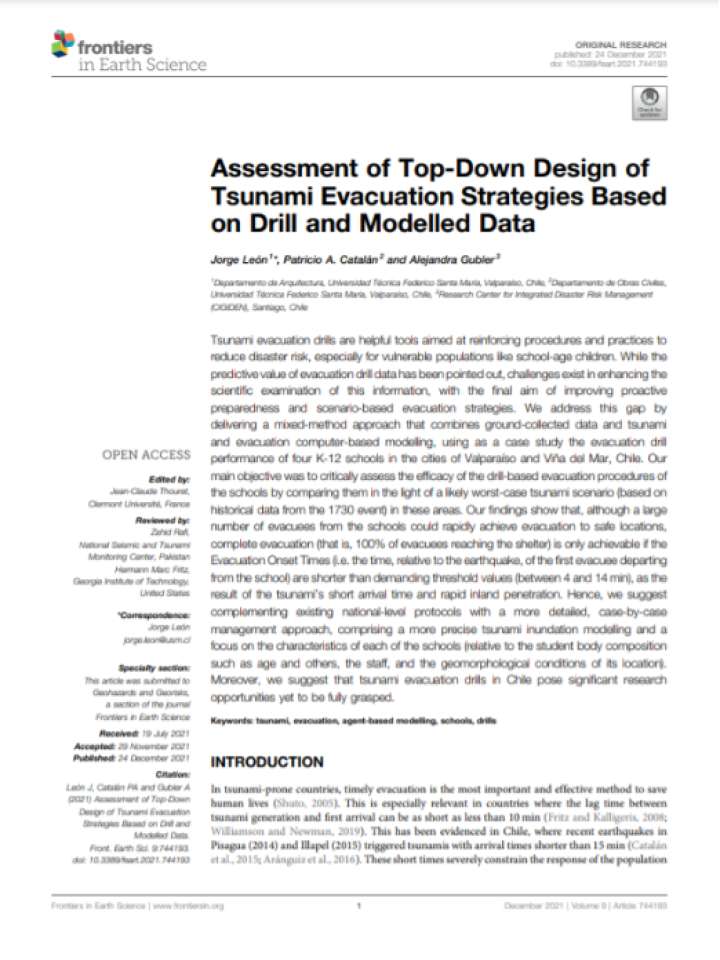Assessment of top-down design of tsunami evacuation strategies based on drill and modelled data
This study aims to address the gap in enhancing the scientific examination of tsunami evacuation data and scenario-based evacuation strategies using a mixed-method approach that combines ground-collected data and tsunami and evacuation computer-based modelling, using as a case study the evacuation drill performance of four K-12 schools in the cities of Valparaíso and Viña del Mar, Chile. Tsunami evacuation drills are helpful tools aimed at reinforcing procedures and practices to reduce disaster risk, especially for vulnerable populations like school-age children. The main objective is to critically assess the efficacy of the drill-based evacuation procedures of the schools by comparing them in the light of a likely worst-case tsunami scenario (based on historical data from the 1730 event) in these areas.
The study finds that, although a large number of evacuees from the schools could rapidly achieve evacuation to safe locations, complete evacuation (that is, 100% of evacuees reaching the shelter) is only achievable if the Evacuation Onset Times (i.e. the time, relative to the earthquake, of the first evacuee departing from the school) are shorter than demanding threshold values (between 4 and 14 min), as the result of the tsunami’s short arrival time and rapid inland penetration. Hence, the study recommends complementing existing national-level protocols with a more detailed, case-by-case management approach, comprising a more precise tsunami inundation modelling and a focus on the characteristics of each of the schools (relative to the student body composition such as age and others, the staff, and the geomorphological conditions of its location). Moreover, the study suggests that tsunami evacuation drills in Chile pose significant research opportunities yet to be fully grasped.
Explore further
